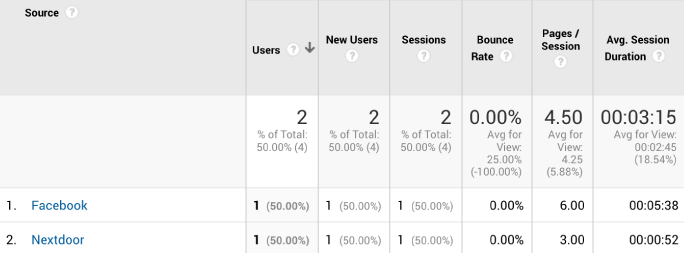
If you have a website, you probably know that you can get metrics on number of visits, where people came from, how long they stayed, what pages they visited along the way, etc. This, and much more, is made possible by Google Analytics (among others). Like many things, it’s straightforward once you get into it, but getting it set up is a whole other thing. Here’s a quick guide.
1. Create an account with Google Analytics and install the code in your website. There are a number of ways to do this depending on the type of site you have. Once it’s connect properly, you’ll start seeing traffic reported in your Google Analytics (GA) account.
2. After letting it run for a day or more, you’ll have some data to review. Clicking around in the GA dashboard and discover the riches of digital information. Analytics doesn’t identify users specifically; you just get to see that someone was on your site, and they visited certain pages. However, you can get more meaningful data with the additional following steps.
3. If you want to be more proactive about tracking visitors, you can create special links that include tracking terms you choose. Standard parameters are: campaign, medium, source and keywords. Using the URL builder tool, you can generate a special URL to share by email, links on affiliate sites, social media, etc. That link will look rather hairy to non-technical eyes, but you can use standard HTML practices to apply it to an image or human-readable text, just like a normal hyperlink. A sample link to Birch Studio may look like this:
https://birchstudio.com/?utm_source=newsletter&utm_medium=blog_post&utm_campaign=general_purpose&utm_term=about_ga
Try it out! This link was made with the code above. It looks like any ordinary website link and takes you to the Thank You page. If you check the URL of that page, you’ll see all of the tracking parameters within the URL.
4. Simply share that link, then watch the traffic roll in. Within minutes of launching your new code, you’ll be able to start tracking the results and see where your marketing efforts are getting the most traction.
5. If you want to track your effectiveness with more precision, you can set up goals, such as sign up for a newsletter, make a purchase or request an appointment.
With this all in place, you’ll be able to hone your sales funnel, focus on promoting what you want to who you want, and know that you’ll be able to see the results of those efforts with a high level of accuracy.